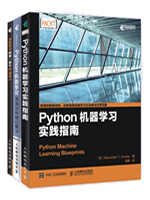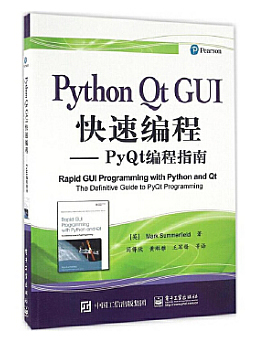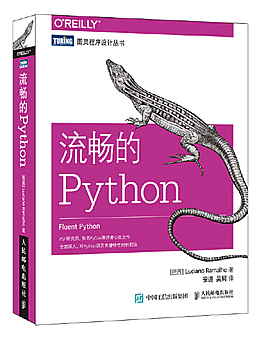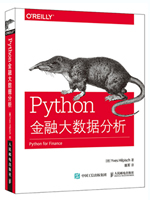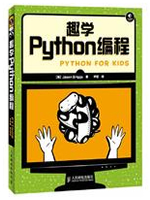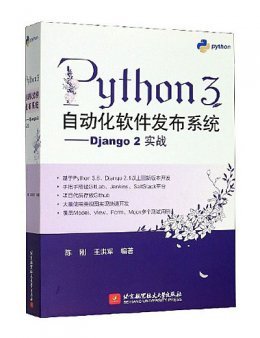我们帮大家精选了相关的编程文章,网友朱沛春根据主题投稿了本篇教程内容,涉及到Python库functools、Python、functools详解、Python库functools相关内容,已被819网友关注,如果对知识点想更进一步了解可以在下方电子资料中获取。
Python库functools
functools模块是Python的标准库的一部分,它是为高阶函数而实现的。高阶函数是作用于或返回另一个函数或多个函数的函数。一般来说,对这个模块而言,任何可调用的对象都可以作为一个函数来处理。
functools 提供了 11个函数:
1. cached_property
将类的方法转换为一个属性,该属性的值计算一次,然后在实例的生命周期中将其缓存作为普通属性。与 property() 类似,但添加了缓存,对于在其他情况下实际不可变的高计算资源消耗的实例特征属性来说该函数非常有用。
# cached_property 缓存属性
class cached_property(object):
"""
Decorator that converts a method with a single self argument into a
property cached on the instance.
Optional ``name`` argument allows you to make cached properties of other
methods. (e.g. url = cached_property(get_absolute_url, name='url') )
"""
def __init__(self, func, name=None):
# print(f'f: {id(func)}')
self.func = func
self.__doc__ = getattr(func, '__doc__')
self.name = name or func.__name__
def __get__(self, instance, type=None):
# print(f'self func: {id(self.func)}')
# print(f'instance: {id(instance)}')
if instance is None:
return self
res = instance.__dict__[self.name] = self.func(instance)
return res
class F00():
@cached_property
def test(self):
# cached_property 将会把每个实例的属性存储到实例的__dict__中, 实例获取属性时, 将会优先从__dict__中获取,则不会再次调用方法内部的过程
print(f'运行test方法内部过程')
return 3
@property
def t(self):
print('运行t方法内部过程')
return 44
f = F00()
print(f.test) # 第一次将会调用test方法内部过程
print(f.test) # 再次调用将直接从实例中的__dict__中直接获取,不会再次调用方法内部过程
print(f.t) # 调用方法内部过程取值
print(f.t) # 调用方法内部过程取值
# 结果输出
# 运行test方法内部过程
# 3
# 3
# 运行t方法内部过程
# 44
# 运行t方法内部过程
# 44
2. cmp_to_key
在 list.sort 和 内建函数 sorted 中都有一个 key 参数
x = ['hello','worl','ni'] x.sort(key=len) print(x) # ['ni', 'worl', 'hello']
3. lru_cache
允许我们将一个函数的返回值快速地缓存或取消缓存。
该装饰器用于缓存函数的调用结果,对于需要多次调用的函数,而且每次调用参数都相同,则可以用该装饰器缓存调用结果,从而加快程序运行。
该装饰器会将不同的调用结果缓存在内存中,因此需要注意内存占用问题。
from functools import lru_cache
@lru_cache(maxsize=30) # maxsize参数告诉lru_cache缓存最近多少个返回值
def fib(n):
if n < 2:
return n
return fib(n-1) + fib(n-2)
print([fib(n) for n in range(10)])
fib.cache_clear() # 清空缓存4. partial
用于创建一个偏函数,将默认参数包装一个可调用对象,返回结果也是可调用对象。
偏函数可以固定住原函数的部分参数,从而在调用时更简单。
from functools import partial
int2 = partial(int, base=8)
print(int2('123'))
# 835. partialmethod
对于python 偏函数partial理解运用起来比较简单,就是对原函数某些参数设置默认值,生成一个新函数。而如果对于类方法,因为第一个参数是 self,使用 partial 就会报错了。
class functools.partialmethod(func, /, *args, **keywords) 返回一个新的 partialmethod 描述器,其行为类似 partial 但它被设计用作方法定义而非直接用作可调用对象。
func 必须是一个 descriptor 或可调用对象(同属两者的对象例如普通函数会被当作描述器来处理)。
当 func 是一个描述器(例如普通 Python 函数, classmethod(), staticmethod(), abstractmethod() 或其他 partialmethod 的实例)时, 对 __get__ 的调用会被委托给底层的描述器,并会返回一个适当的 部分对象 作为结果。
当 func 是一个非描述器类可调用对象时,则会动态创建一个适当的绑定方法。 当用作方法时其行为类似普通 Python 函数:将会插入 self 参数作为第一个位置参数,其位置甚至会处于提供给 partialmethod 构造器的 args 和 keywords 之前。
from functools import partialmethod
class Cell:
def __init__(self):
self._alive = False
@property
def alive(self):
return self._alive
def set_state(self, state):
self._alive = bool(state)
set_alive = partialmethod(set_state, True)
set_dead = partialmethod(set_state, False)
print(type(partialmethod(set_state, False)))
#
c = Cell()
c.alive
# False
c.set_alive()
c.alive
# True 6. reduce
函数的作用是将一个序列归纳为一个输出reduce(function, sequence, startValue)
from functools import reduce l = range(1,50) print(reduce(lambda x,y:x+y, l)) # 1225
7. singledispatch
单分发器,用于实现泛型函数。根据单一参数的类型来判断调用哪个函数。
from functools import singledispatch
@singledispatch
def fun(text):
print('String:' + text)
@fun.register(int)
def _(text):
print(text)
@fun.register(list)
def _(text):
for k, v in enumerate(text):
print(k, v)
@fun.register(float)
@fun.register(tuple)
def _(text):
print('float, tuple')
fun('i am is hubo')
fun(123)
fun(['a','b','c'])
fun(1.23)
print(fun.registry) # 所有的泛型函数
print(fun.registry[int]) # 获取int的泛型函数
# String:i am is hubo
# 123
# 0 a
# 1 b
# 2 c
# float, tuple
# {: , : , : , : , : }
#
8. singledispatchmethod
与泛型函数类似,可以编写一个使用不同类型的参数调用的泛型方法声明,根据传递给通用方法的参数的类型,编译器会适当地处理每个方法调用。
class Negator:
@singledispatchmethod
def neg(self, arg):
raise NotImplementedError("Cannot negate a")
@neg.register
def _(self, arg: int):
return -arg
@neg.register
def _(self, arg: bool):
return not arg9. total_ordering
它是针对某个类如果定义了lt、le、gt、ge这些方法中的至少一个,使用该装饰器,则会自动的把其他几个比较函数也实现在该类中
from functools import total_ordering
class Person:
# 定义相等的比较函数
def __eq__(self,other):
return ((self.lastname.lower(),self.firstname.lower()) ==
(other.lastname.lower(),other.firstname.lower()))
# 定义小于的比较函数
def __lt__(self,other):
return ((self.lastname.lower(),self.firstname.lower()) <
(other.lastname.lower(),other.firstname.lower()))
p1 = Person()
p2 = Person()
p1.lastname = "123"
p1.firstname = "000"
p2.lastname = "1231"
p2.firstname = "000"
print p1 < p2 # True
print p1 <= p2 # True
print p1 == p2 # False
print p1 > p2 # False
print p1 >= p2 # False10. update_wrapper
使用 partial 包装的函数是没有__name__和__doc__属性的。update_wrapper 作用:将被包装函数的__name__等属性,拷贝到新的函数中去。
from functools import update_wrapper
def wrap2(func):
def inner(*args):
return func(*args)
return update_wrapper(inner, func)
@wrap2
def demo():
print('hello world')
print(demo.__name__)
# demo11. wraps
warps 函数是为了在装饰器拷贝被装饰函数的__name__。
就是在update_wrapper上进行一个包装
from functools import wraps
def wrap1(func):
@wraps(func) # 去掉就会返回inner
def inner(*args):
print(func.__name__)
return func(*args)
return inner
@wrap1
def demo():
print('hello world')
print(demo.__name__)
# demo参考文献
到此这篇关于Python库functools详解的文章就介绍到这了,更多相关Python库functools内容请搜索码农之家以前的文章或继续浏览下面的相关文章希望大家以后多多支持码农之家!

